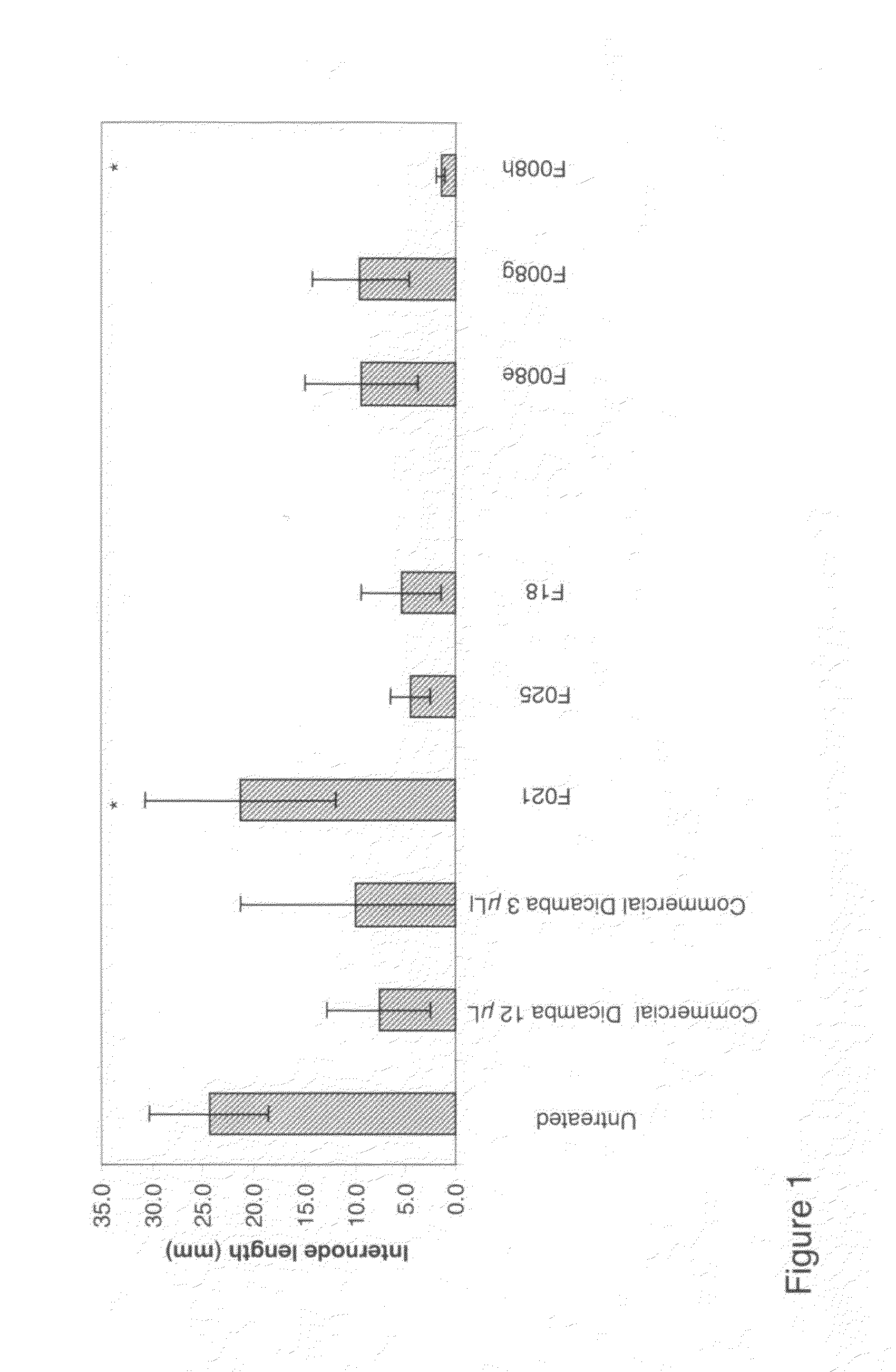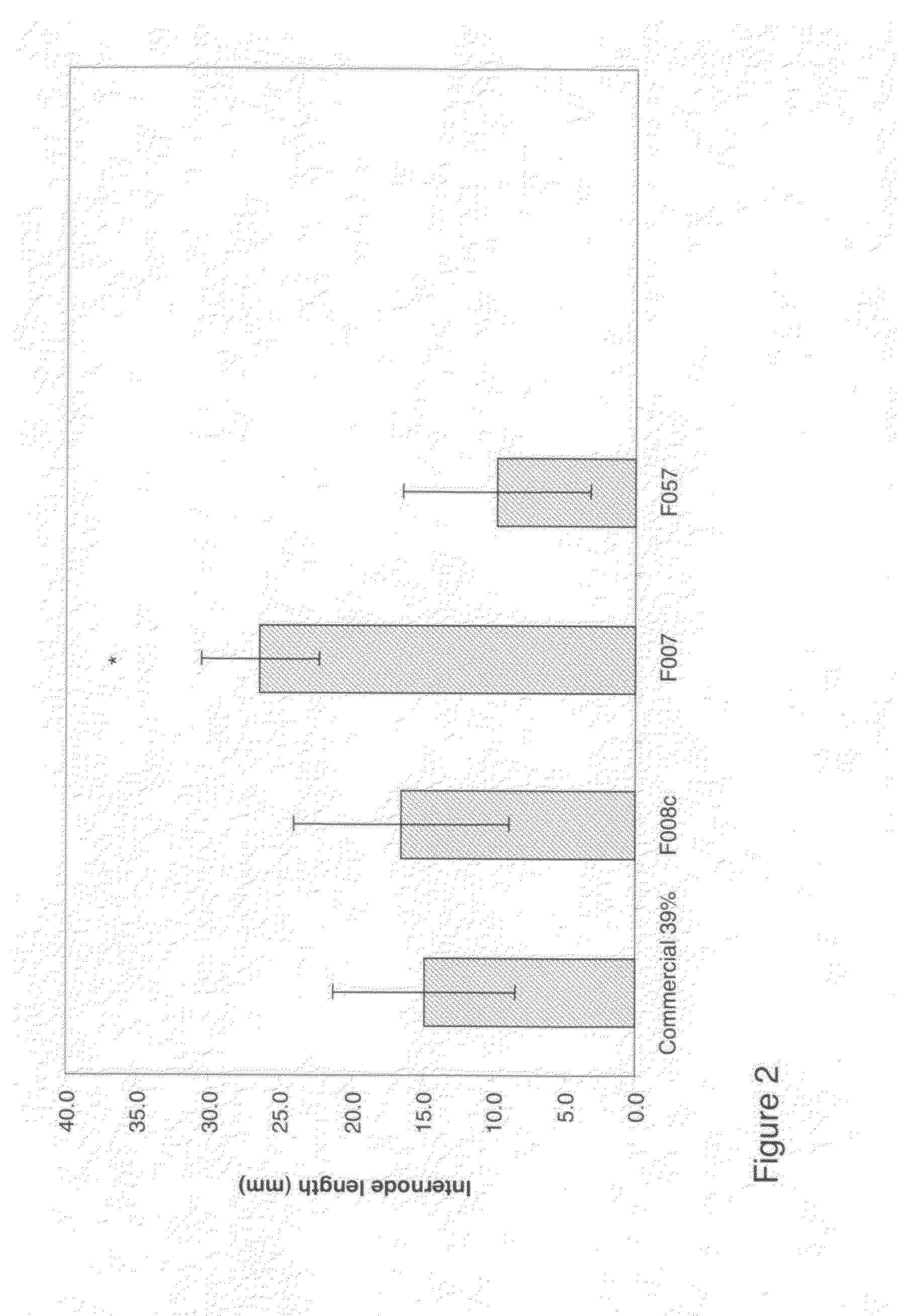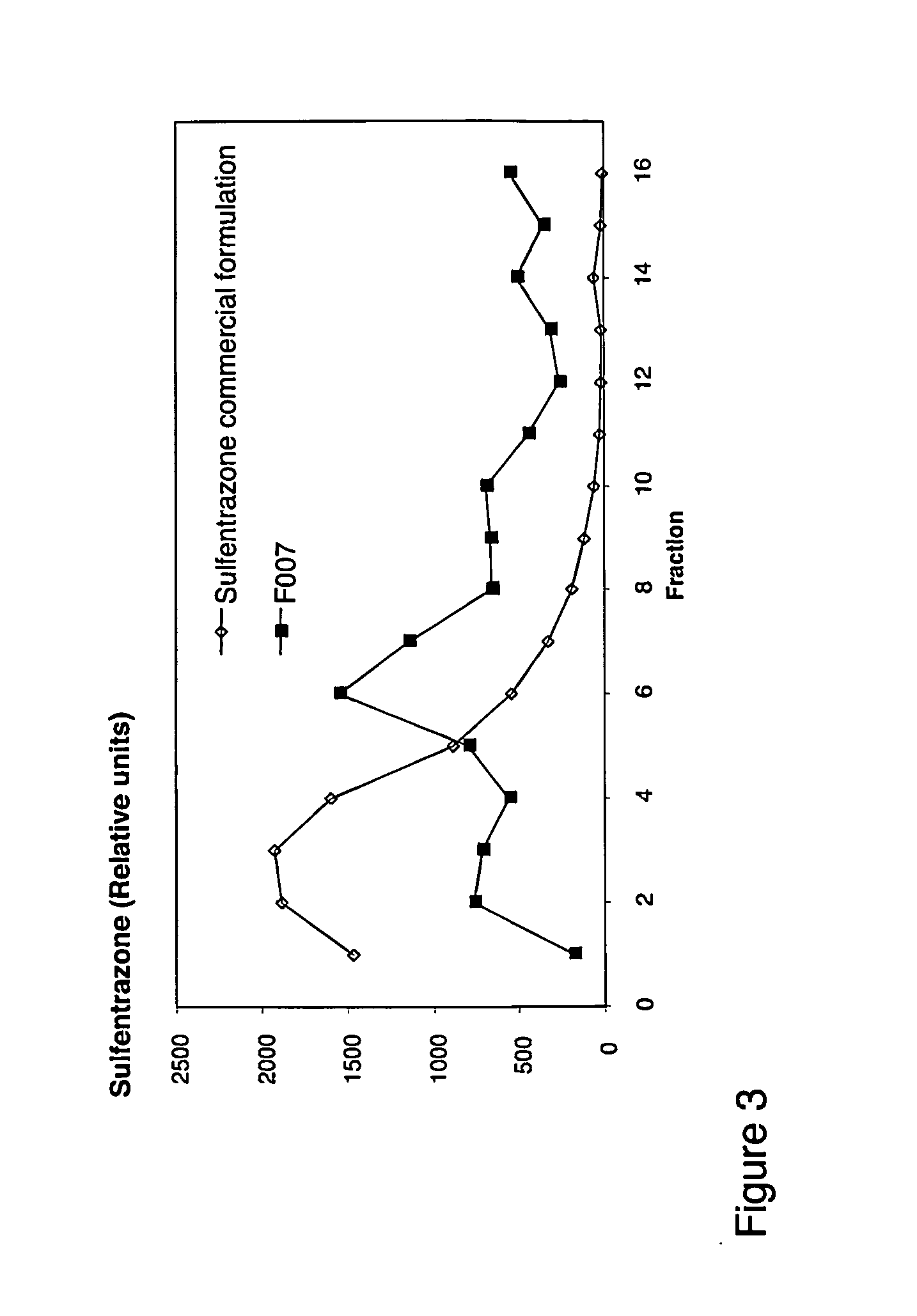Novel pesticide formulations
a technology of biological active agents and formulations, applied in the field of biological active agent formulations, can solve the problems of less success in controlling the application or placement of these chemicals, off-target effects, and increase the load on the environment, and achieve the effect of high compound capacity
- Summary
- Abstract
- Description
- Claims
- Application Information
AI Technical Summary
Benefits of technology
Problems solved by technology
Method used
Image
Examples
example 1
Formulation to Retard Non-Polar Pesticide for a Longer Activity (F001)
[0073]a) 50 mL polyethylenimine solution (10% in methanol, containing 10% of water) and stearic acid (6.6 g) were combined and heated to 160° C. under a slow stream of argon under occasional system evacuation (ca. 150 mbar) and then vacume to 75 min, then vacuum is released, temperature, increased to 177° C. for an additional 30 min.
b) 400 mg of the product a) and terbutylazine (400 mg) were combined in a mortar and mixed by intense grinding at elevated temperature (50° C.). The pesticide mixture was cooled via addition of liquid nitrogen, and the material was pulverized to a fine powder.
example 2
Preparation of a Slow Release Formulation of Sulfentrazone to a Solid Cationic Exchange Resin Based on Polyethylenimine (F002)
[0074]a) Jeffamine ED 900 (Huntsman, 13.72 g) and epichlorohydrin (7.9 mL) were dissolved in sufficient amounts of acetonitrile to give a total volume of 60 mL. The mixture was heated to reflux for 4 h.
b) Polyethylenimine (50% in H2O=6.64 g of PEI, 13.27 g), 35 mL of solution a) and 35 mL of 0.1M NaOH were heated to 80° C. and to this mixture was added sufficient water to achieve a homogenous solution. Heating was continued for 24 h and the resulting gel was crushed with a mixing tool to a particle size of approx. 100 μm or smaller. When necessary, the mixture was kept fluid with the addition of water, at which point 3 mL of ethanolamine was added, and the mixture was heated to reflux for 3 h. The solids were isolated by centrifugation, and the material was washed 4 times with 12 time its volume with methanol. The dry weight of the material can be estimated a...
example 3
Preparation of Slow Release Formulations with a Solid Ion Exchange Resin Based on Polyethylenimine and Silica (F003)
[0076]Dicamba (100 mg) was dissolved in 1 mL of a solution of 10% polyethylenimine and 10% water in methanol. Dissolution was sluggish and was accelerated by gentle warming and vigorous agitation. Tetraethyl orthosilicate (TEOS) (385 μL of a 13% solution) in ethanol were added, and the mixture was homogenized by shaking or stirring. After 45 min in a closed vessel, the mixture was transferred into an open container and left to air-dry for 12 h. The flexible, solid product can be milled when cooled i.e. with liquid nitrogen, or left for ageing in a moist atmosphere and / or at elevated temperature to harden.
[0077]The same procedure can be applied to other active ingredient. Examples of which are, but not limited to bromacil, sulfentrazone, quinclorac, or imazamox. In addition, fungicides, insecticides, nematicides and other pest controlling agents can be treated the same ...
PUM
| Property | Measurement | Unit |
|---|---|---|
| pKa | aaaaa | aaaaa |
| molar ratio | aaaaa | aaaaa |
| diameter | aaaaa | aaaaa |
Abstract
Description
Claims
Application Information
 Login to View More
Login to View More - R&D
- Intellectual Property
- Life Sciences
- Materials
- Tech Scout
- Unparalleled Data Quality
- Higher Quality Content
- 60% Fewer Hallucinations
Browse by: Latest US Patents, China's latest patents, Technical Efficacy Thesaurus, Application Domain, Technology Topic, Popular Technical Reports.
© 2025 PatSnap. All rights reserved.Legal|Privacy policy|Modern Slavery Act Transparency Statement|Sitemap|About US| Contact US: help@patsnap.com



